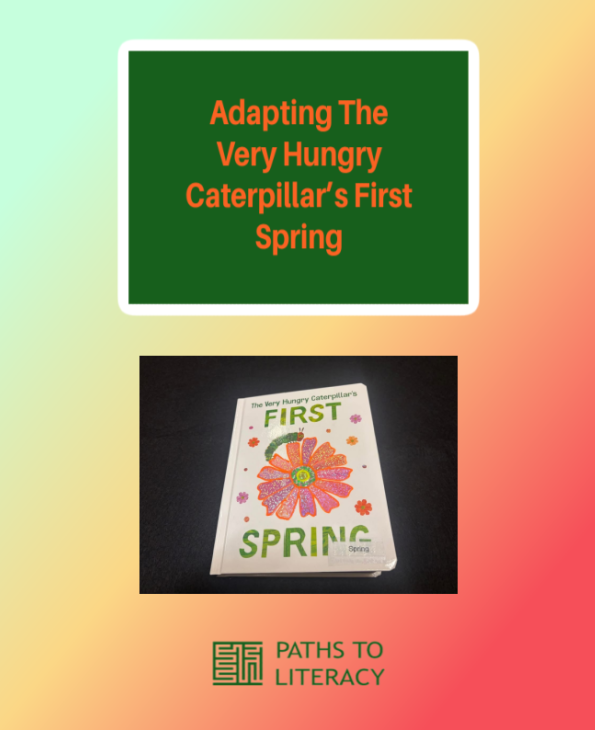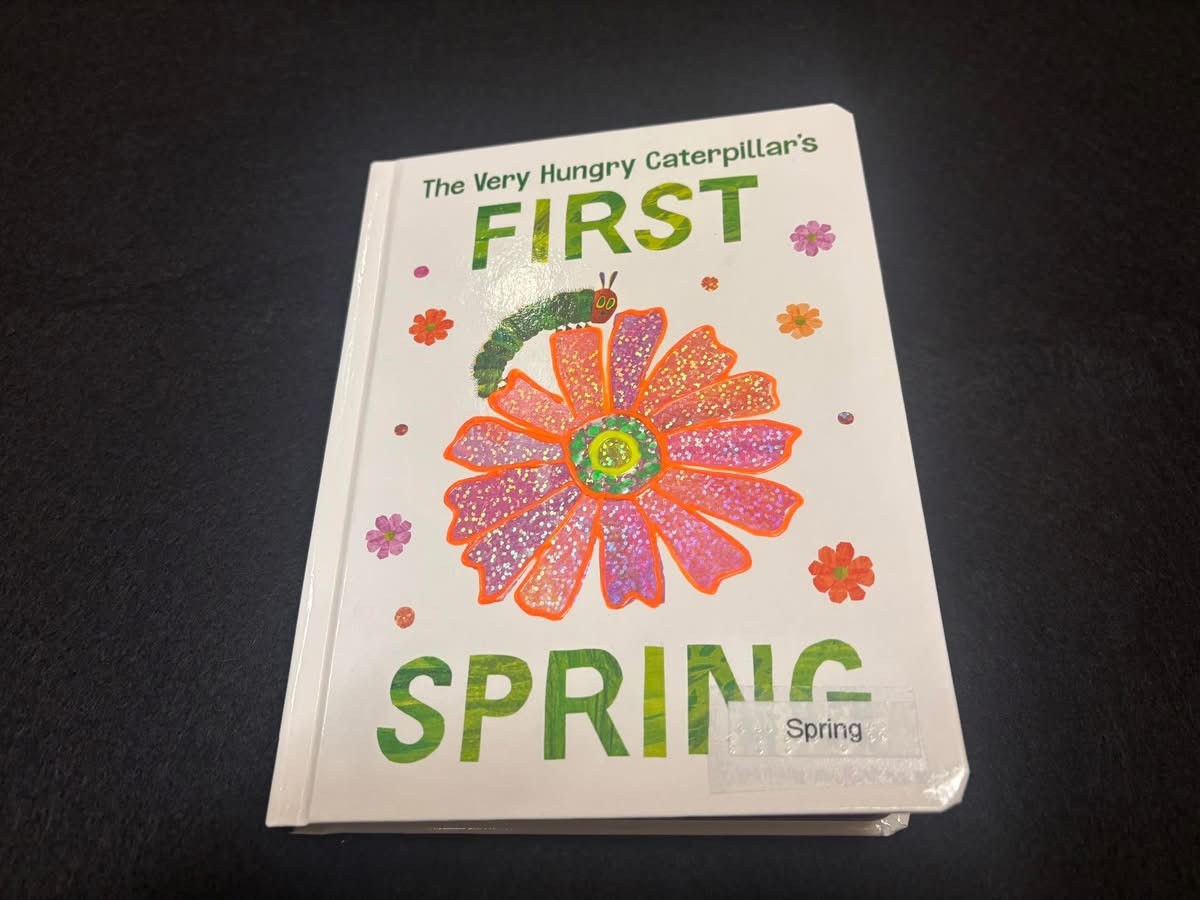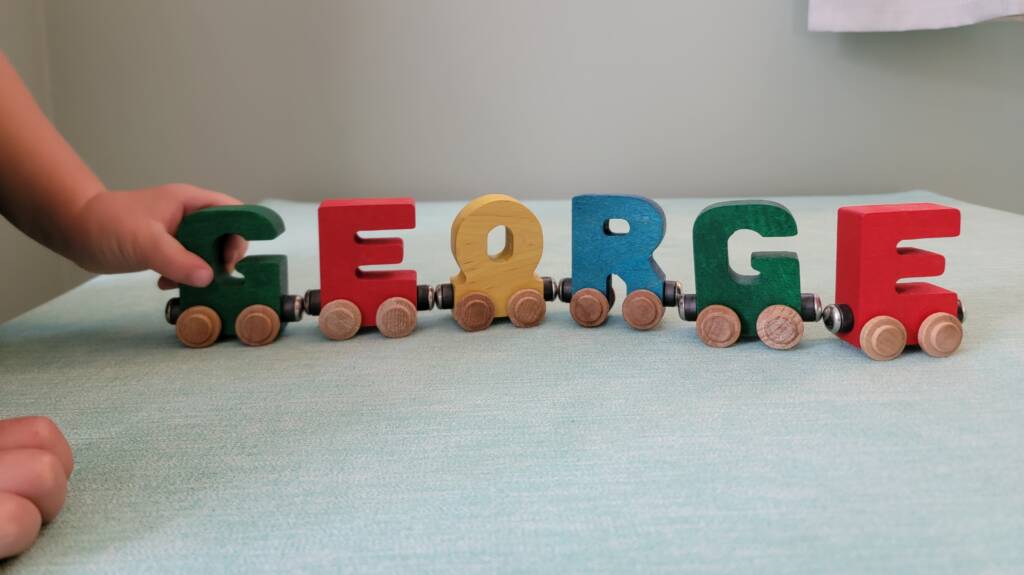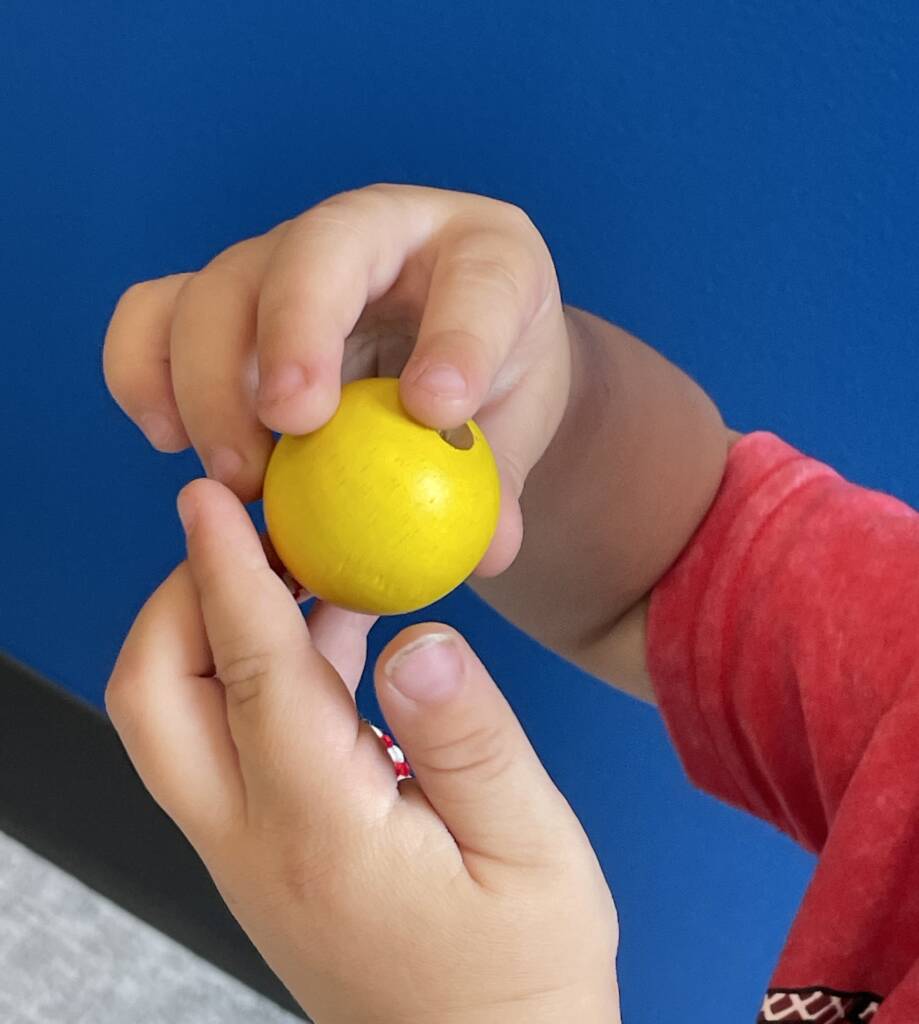As we entered into the spring season, I wanted to support my teachers with some read aloud options for their students. The Very Hungry Caterpillar’s First Spring is such a cute book, and I loved the larger font and the simple but descriptive text on each page. For early readers, the board book format is great because they can more easily help turn pages.
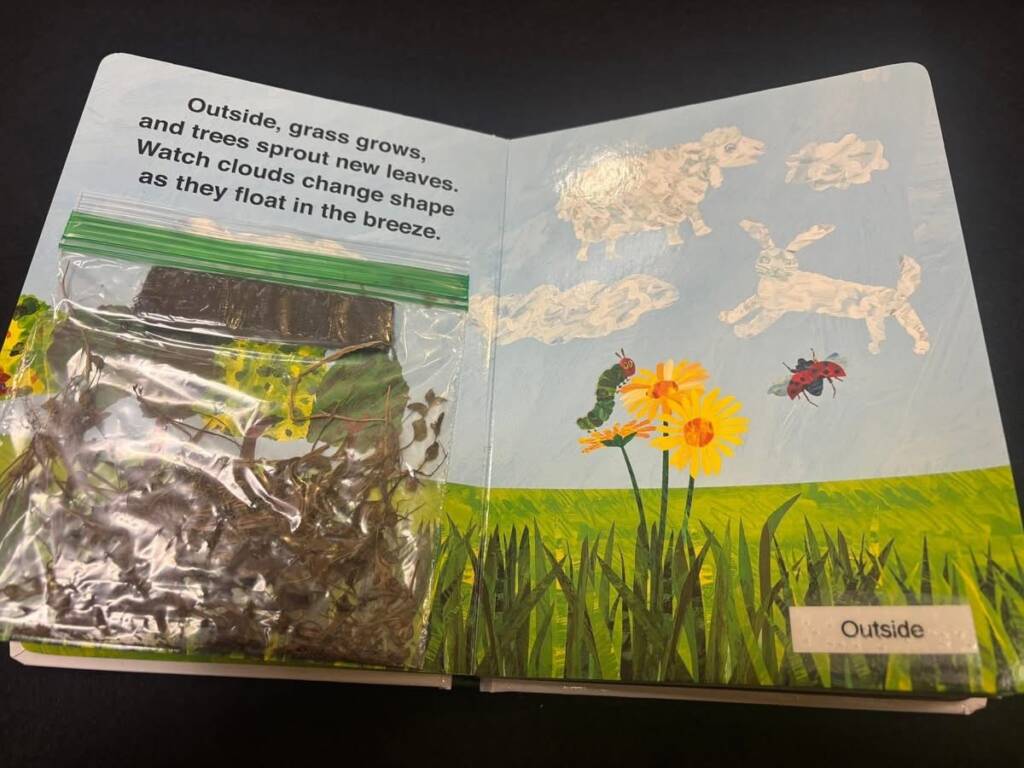
Materials
To adapt the book, I used materials including:
- Puff paint
- Glue
- Glitter
- Ziploc bags
- Potting soil
- Grass and twigs from outside
- Artificial pine tree branches
- Shiny, holographic paper
- Artificial grass or soft velcro strips
- Braille and print labels

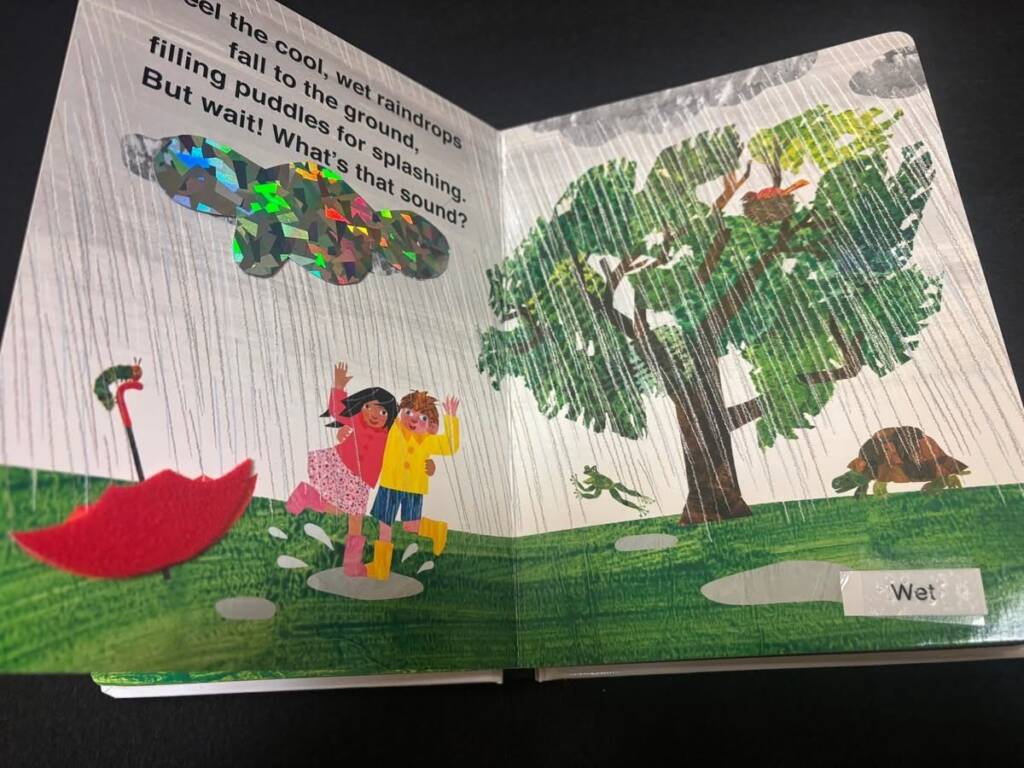
Considerations
Some things I considered when adapting this book
- Not every page HAS to have a tactile embellishment.
- You do not need to put the entire text in braille. You may choose to focus on one word and ask the student to find the braille, consistently placed in the same location on a page. (In this case, we tried several locations for the uncontracted braille word and eventually settled on the location where his hands naturally landed.)
- You may choose not to include ANY braille and focus on other skills like turning pages, engaging with the story, or exploring the images.
- Place real items in Ziploc bags for exploring during the story. This will allow you to replace them as needed as well.
- Try to use colors and textures that are appealing to your students.
- Keep it simple, and enjoy the process.
Adaptations and Extensions
- Collect real objects or items that correspond to the story, and create a book box. Some items might include, a container of soil, sticks, leaves, fresh flowers, a spray bottle with water, seeds, an umbrella, a warm pack that can be heated, etc…
- Plant some seeds and experience them sprouting.
- Discuss the water cycle.
- Go on a nature walk and explore real grass and trees.
- Collect trees and sticks to compare and contrast or sort into groups.
- Create an experience story about a nature walk or planting a garden.
- Discuss the life cycle of caterpillars or seeds.
- Collect data on the weather.
- Survey the class about their favorite season to practice social skills and communication.

Keep Reading
Adapting the Hungry Caterpillar for Children Who Are Blind by Sandy Gillam
